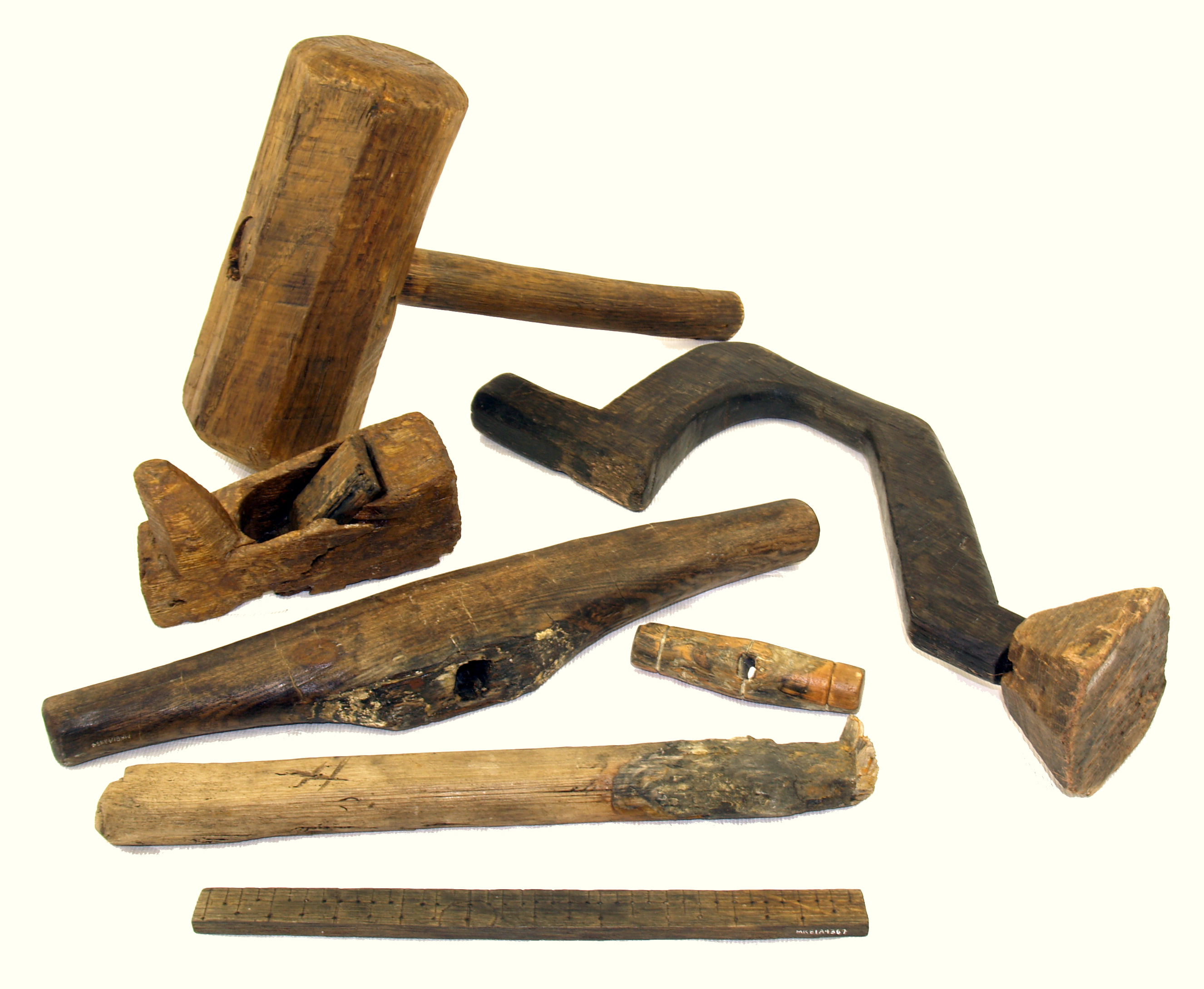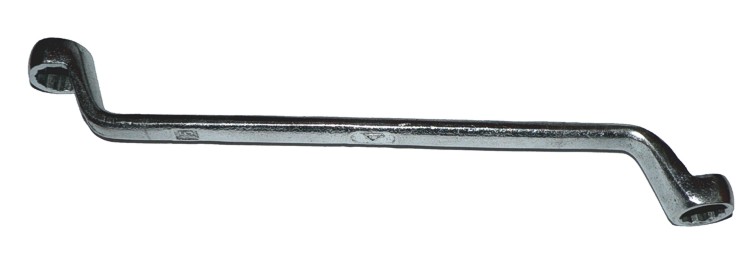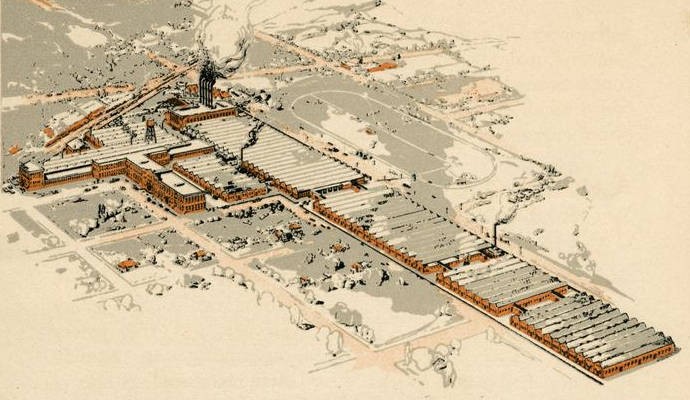|
Screwdriver
A screwdriver is a tool, manual or powered, used for turning screws. Description A typical simple screwdriver has a handle and a shaft, ending in a tip the user puts into the screw head before turning the handle. This form of the screwdriver has been replaced in many workplaces and homes with a more modern and versatile tool, a power drill, as they are quicker, easier, and can also drill holes. The shaft is usually made of tough steel to resist bending or twisting. The tip may be hardened to resist wear, treated with a dark tip coating for improved visual contrast between tip and screw—or ridged or treated for additional "grip". Handles are typically wood, metal, or plastic and usually hexagonal, square, or oval in cross-section to improve grip and prevent the tool from rolling when set down. Some manual screwdrivers have interchangeable tips that fit into a socket on the end of the shaft and are held in mechanically or magnetically. These often have a hollow handle that ... [...More Info...] [...Related Items...] OR: [Wikipedia] [Google] [Baidu] |
List Of Screw Drives
At a minimum, a screw drive is a set of shaped cavities and protrusions on the screw head that allows torque to be applied to it. Usually, it also involves a mating tool, such as a screwdriver, that is used to turn it. Some of the less-common drives are classified as being "tamper-resistant". Most heads come in a range of sizes, typically distinguished by a number, such as "Phillips #00". Overview Slotted drives Slot Slot screw drives have a single horizontal indentation (the ''slot'') in the fastener head and is driven by a "common blade" or flat-bladed screwdriver. This form was the first type of screw drive to be developed, and, for centuries, it was the simplest and cheapest to make because it can just be sawed or filed. Blunt or damaged tools can easily be re-ground as required in any workshop. It is unique because the slot head is straightforward to manufacture, and because it can be driven by a simple handtool. The ''slotted screw'' is commonly found in existing p ... [...More Info...] [...Related Items...] OR: [Wikipedia] [Google] [Baidu] |
Robertson Screw
A Robertson screw, also known as a square screw or Scrulox, is a type of screw with a Square (geometry), square-shaped socket in the screw head and a corresponding square protrusion on the tool. Both the tool and socket have a slight Cone, taper. The contemporary square drive screw has all but replaced the Robertson screw proper and is commonly referred to as a Robertson because it has practically identical drive dimensions and the same colour identification system, but the contemporary square drive socket has parallel sides rather than tapered. The original purpose of the taper was to enable the screws to be made using cold forming of the heads,but the taper has two other advantages which have helped popularize it: It makes inserting the tool easier and it helps keep the screw on the tool without the user having to hold it there. The Robertson screw is specified as ANSI Type III Square Center. Usage and design Robertson screws are commonplace in Canada, though they have b ... [...More Info...] [...Related Items...] OR: [Wikipedia] [Google] [Baidu] |
Screw
A screw is an externally helical threaded fastener capable of being tightened or released by a twisting force (torque) to the screw head, head. The most common uses of screws are to hold objects together and there are many forms for a variety of materials. Screws might be inserted into holes in assembled parts or a screw may form its own thread. The #Differentiation between bolt and screw, difference between a screw and a bolt is that the latter is designed to be tightened or released by torquing a Nut (hardware), nut. The screw head on one end has a slot or other feature that commonly requires a tool to transfer the twisting force. Common tools for driving screws include screwdrivers, wrenches, coins and hex keys. The head is usually larger than the body, which provides a ''bearing surface'' and keeps the screw from being driven deeper than its length; an exception being the ''set screw'' (aka grub screw). The cylindrical portion of the screw from the underside of the head t ... [...More Info...] [...Related Items...] OR: [Wikipedia] [Google] [Baidu] |
Impact Driver
An impact driver is a tool that delivers a strong, sudden rotational force and forward thrust. The force can be delivered either by striking with a hammer in the case of manual impact drivers, or mechanically in the case of powered impact drivers. It is often used by mechanics to loosen larger screws, bolts and nuts that are corrosively "frozen" or over-torqued. The direction can also be reversed for situations where screws have to be tightened with torque greater than a screwdriver can reasonably provide. Manual impact drivers Manual impact drivers consist of a heavy outer sleeve that surrounds an inner core that is splined to it. The spline is curved so that when the user strikes the outer sleeve with a hammer, its downward force works on the spline to produce turning force on the core and any socket or work bit attached to it. The tool translates the heavy rotational inertia of the sleeve to the lighter core to generate large amounts of torque. At the same time, the s ... [...More Info...] [...Related Items...] OR: [Wikipedia] [Google] [Baidu] |
Power Drill
A drill is a tool used for making round holes or driving fasteners. It is fitted with a drill bit for making holes, or a screwdriver bit for securing fasteners. Historically, they were powered by hand, and later mains power, but cordless battery-powered drills are proliferating due to increased efficiency and ease of use. Drills are commonly used in woodworking, metalworking, construction, machine tool fabrication, and utility projects. Specially designed versions are made for surgery, dentistry, miniatures, and other applications. History Around 35,000 BC, ''Homo sapiens'' discovered the benefits of the application of rotary tools. This would have rudimentarily consisted of a pointed rock being spun between the hands to bore a hole through another material. This led to the hand drill, a smooth stick, that was sometimes attached to flint point, and was rubbed between the palms. This was used by many ancient civilizations around the world including the Mayans. The earlies ... [...More Info...] [...Related Items...] OR: [Wikipedia] [Google] [Baidu] |
Hand Tool
A hand tool is any tool that is powered manual labour, by hand rather than a motor. Categories of hand tools include wrenches, pliers, cutter (other), cutters, File (tool), files, hammer, striking tools, chisel, struck or hammered tools, screwdriver, screwdrivers, vises, clamp (tool), clamps, snips, hacksaws, drills, and knives. Outdoor tools such as garden forks, pruning shears, and Rake (tool), rakes are additional forms of hand tools. Portable power tools are not hand tools. History Hand tools have been used by humans since the Stone Age, when stone tools were used for hammering and cutting. During the Bronze Age, tools were made by casting alloys of copper and tin. Bronze tools were sharper and harder than those made of stone. During the Iron Age iron replaced bronze, and tools became even stronger and more durable. The Ancient Rome, Romans developed tools during this period which are similar to those being produced today. After the Industrial Revolution, most tools ... [...More Info...] [...Related Items...] OR: [Wikipedia] [Google] [Baidu] |
Tool
A tool is an Physical object, object that can extend an individual's ability to modify features of the surrounding environment or help them accomplish a particular task. Although many Tool use by animals, animals use simple tools, only human beings, whose use of stone tools dates back hundreds of millennia, have been observed using tools to make other tools. Early human tools, made of such materials as Rock (geology), stone, bone, and wood, were used for the preparation of food, hunting, the manufacture of weapons, and the working of materials to produce clothing and useful Cultural artifact, artifacts and crafts such as pottery, along with the construction of housing, businesses, infrastructure, and transportation. The development of metalworking made additional types of tools possible. Harnessing energy sources, such as Working animal, animal power, wind, or steam, allowed increasingly complex tools to produce an even larger range of items, with the Industrial Revolution markin ... [...More Info...] [...Related Items...] OR: [Wikipedia] [Google] [Baidu] |
Power Tool
A power tool is a tool that is actuator, actuated by an additional engine, power source and mechanism (engineering), mechanism other than the solely manual labour, manual labor used with hand tools. The most common types of power tools use electric motors. Internal combustion engines and compressed air are also commonly used. Tools directly driven by working animal, animal power are not generally considered power tools. Power tools can produce large amounts of particulates, including ultrafine particles. Airborne particulate matter is a Group 1 carcinogen. Uses Power tools are used in industry, in construction, in renovation, in the garden, for Homemaking, housework tasks such as Outline of food preparation#Food preparation techniques, cooking, housekeeping, cleaning, and Do it yourself, around the house for purposes of driving (fasteners), drilling, saw, cutting, shaping, sander, sanding, Grinding (abrasive cutting), grinding, router (woodworking), routing, polishing, painting, me ... [...More Info...] [...Related Items...] OR: [Wikipedia] [Google] [Baidu] |
Wrench
A wrench or spanner is a tool used to provide grip and mechanical advantage in applying torque to turn objects—usually rotary fasteners, such as nuts and bolts—or keep them from turning. In the UK, Ireland, Australia, and New Zealand ''spanner'' is the standard term. The most common shapes are called ''open-ended spanner'' and ''ring spanner''. The term ''wrench'' is generally used for tools that turn non-fastening devices (e.g. tap wrench and pipe wrench), or may be used for a monkey wrench—an adjustable pipe wrench. In North American English, ''wrench'' is the standard term. The most common shapes are called ''open-end wrench'' and ''box-end wrench''. In American English, ''spanner'' refers to a specialized wrench with a series of pins or tabs around the circumference. (These pins or tabs fit into the holes or notches cut into the object to be turned). In American commerce, such a wrench may be called a ''spanner wrench'' to distinguish it from the British sense ... [...More Info...] [...Related Items...] OR: [Wikipedia] [Google] [Baidu] |
Phillips Screw Head
Phillips may refer to: Businesses Energy * Chevron Phillips Chemical, American petrochemical firm jointly owned by Chevron Corporation and Phillips 66. * ConocoPhillips, American energy company * Phillips 66, American energy company * Phillips Petroleum Company, American oil company Service * Phillips (auctioneers), auction house * Phillips Distilling Company, Minnesota distillery * Phillips Foods, Inc. and Seafood Restaurants, seafood chain in the mid-Atlantic states * Phillips International Records, a record label founded by Sam Phillips Vehicle * Phillips (constructor), American constructor of racing cars * Phillips Cycles, British manufacturer of bicycles and mopeds People Surname * Philip Phillips (other) *Phillips (surname) Given name * Phillips Barry (1880–1937), American academic * Phillips Brooks (1835–1893), American clergyman and author * Phillips Callbeck (1744–1790), merchant and political figure in St. John's Island, Canada * Phillips ... [...More Info...] [...Related Items...] OR: [Wikipedia] [Google] [Baidu] |
Auto Industry
The automotive industry comprises a wide range of companies and organizations involved in the design, development, manufacturing, marketing, selling, repairing, and modification of motor vehicles. It is one of the world's largest industries by revenue (from 16% such as in France up to 40% in countries such as Slovakia). The word ''automotive'' comes from the Greek ''autos'' (self), and Latin ''motivus'' (of motion), referring to any form of self-powered vehicle. This term, as proposed by Elmer Sperry (1860–1930), first came into use to describe automobiles in 1898. History The automotive industry began in the 1860s with hundreds of manufacturers pioneering the horseless carriage. Early car manufacturing involved manual assembly by a human worker. The process evolved from engineers working on a stationary car to a conveyor belt system where the car passed through multiple stations of more specialized engineers. In the 1960s, robotic equipment was introduced, and ... [...More Info...] [...Related Items...] OR: [Wikipedia] [Google] [Baidu] |







